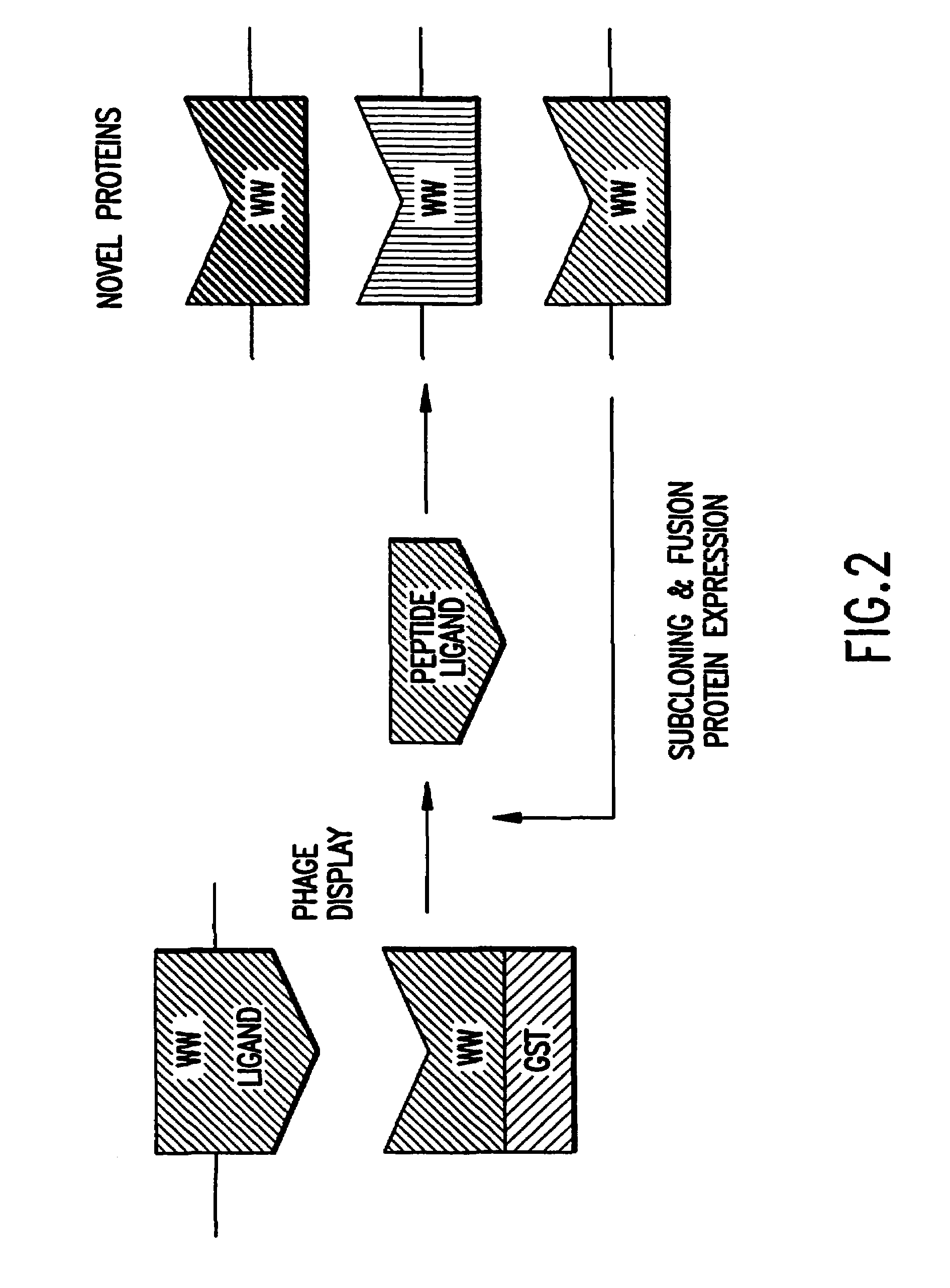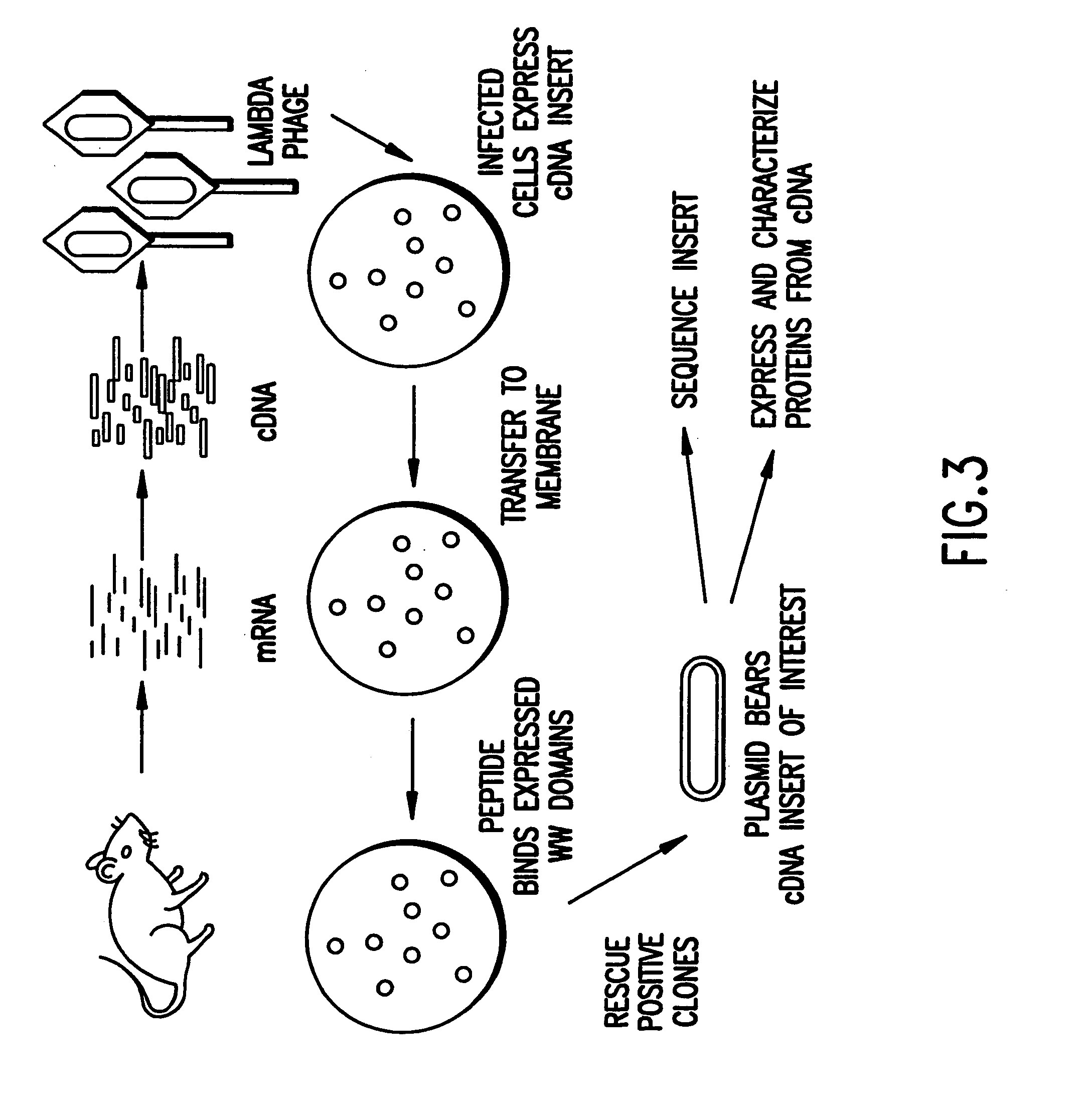Identification and isolation of novel polypeptides having WW domains and methods of using same
a polypeptide and domain technology, applied in the field of identification and isolation of polypeptides having ww domains, can solve the problem of low homology between different sequences that bind sh3 domains, and achieve the effect of ease of specificity
- Summary
- Abstract
- Description
- Claims
- Application Information
AI Technical Summary
Benefits of technology
Problems solved by technology
Method used
Image
Examples
Embodiment Construction
[0072]The present invention relates to polypeptides having a WW domain, methods of identifying and using these polypeptides and derivatives thereof, and nucleic acids encoding the foregoing. The detailed description that follows is provided to elucidate the invention further and to assist further those of ordinary skill who may be interested in practicing particular aspects of the invention.
[0073]First, certain definitions are in order. Accordingly, the term “polypeptide” refers to a molecule comprised of amino acid residues joined by peptide (i.e., amide) bonds and includes proteins and peptides. Hence, the polypeptides of the present invention may have single or multiple chains of covalently linked amino acids and may further contain intrachain or interchain linkages comprised of disulfide bonds. Some polypeptides may also form a subunit of a multiunit macromolecular complex. Naturally, the polypeptides can be expected to possess conformational preferences and to exhibit a three-d...
PUM
| Property | Measurement | Unit |
|---|---|---|
| molecular weights | aaaaa | aaaaa |
| molecular weight | aaaaa | aaaaa |
| molecular weight | aaaaa | aaaaa |
Abstract
Description
Claims
Application Information
 Login to View More
Login to View More - R&D
- Intellectual Property
- Life Sciences
- Materials
- Tech Scout
- Unparalleled Data Quality
- Higher Quality Content
- 60% Fewer Hallucinations
Browse by: Latest US Patents, China's latest patents, Technical Efficacy Thesaurus, Application Domain, Technology Topic, Popular Technical Reports.
© 2025 PatSnap. All rights reserved.Legal|Privacy policy|Modern Slavery Act Transparency Statement|Sitemap|About US| Contact US: help@patsnap.com



